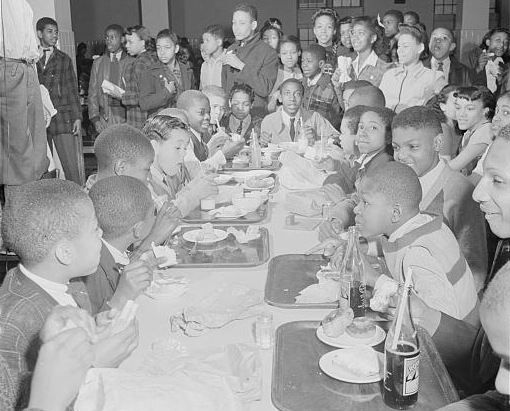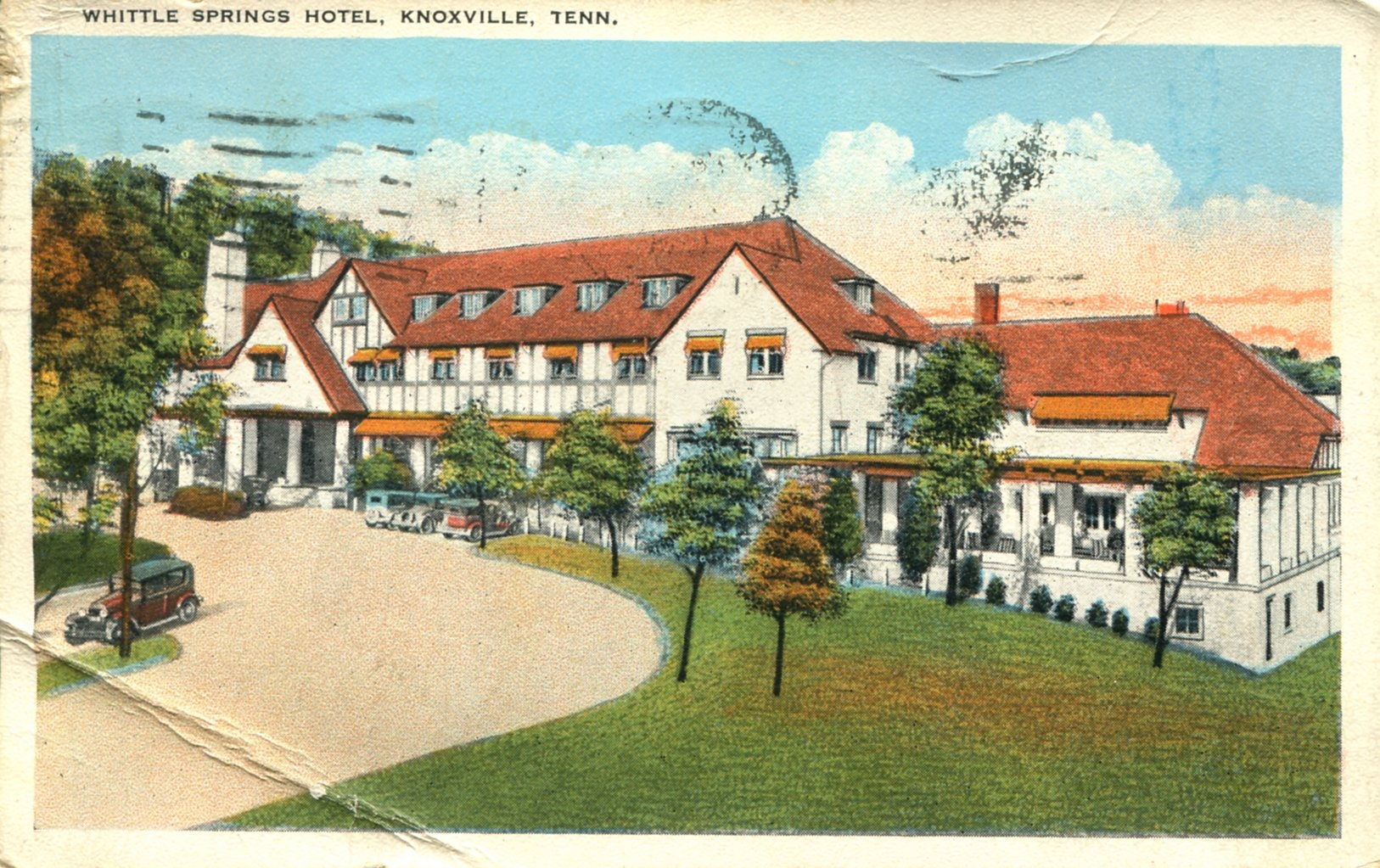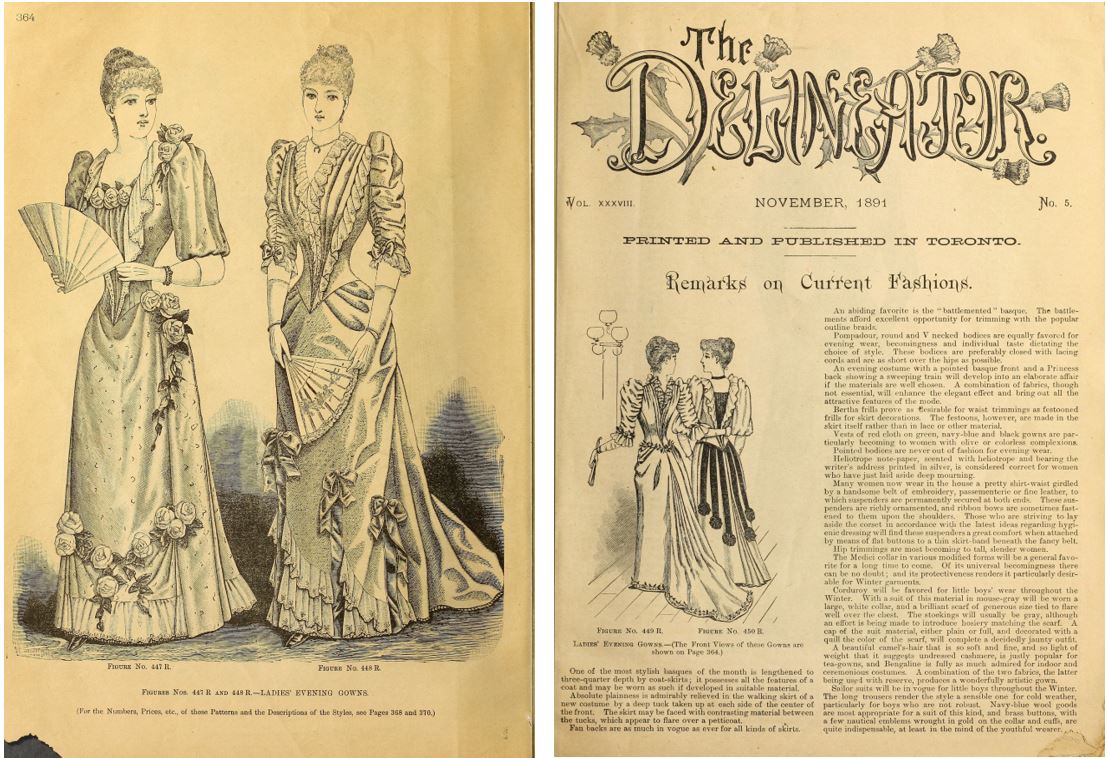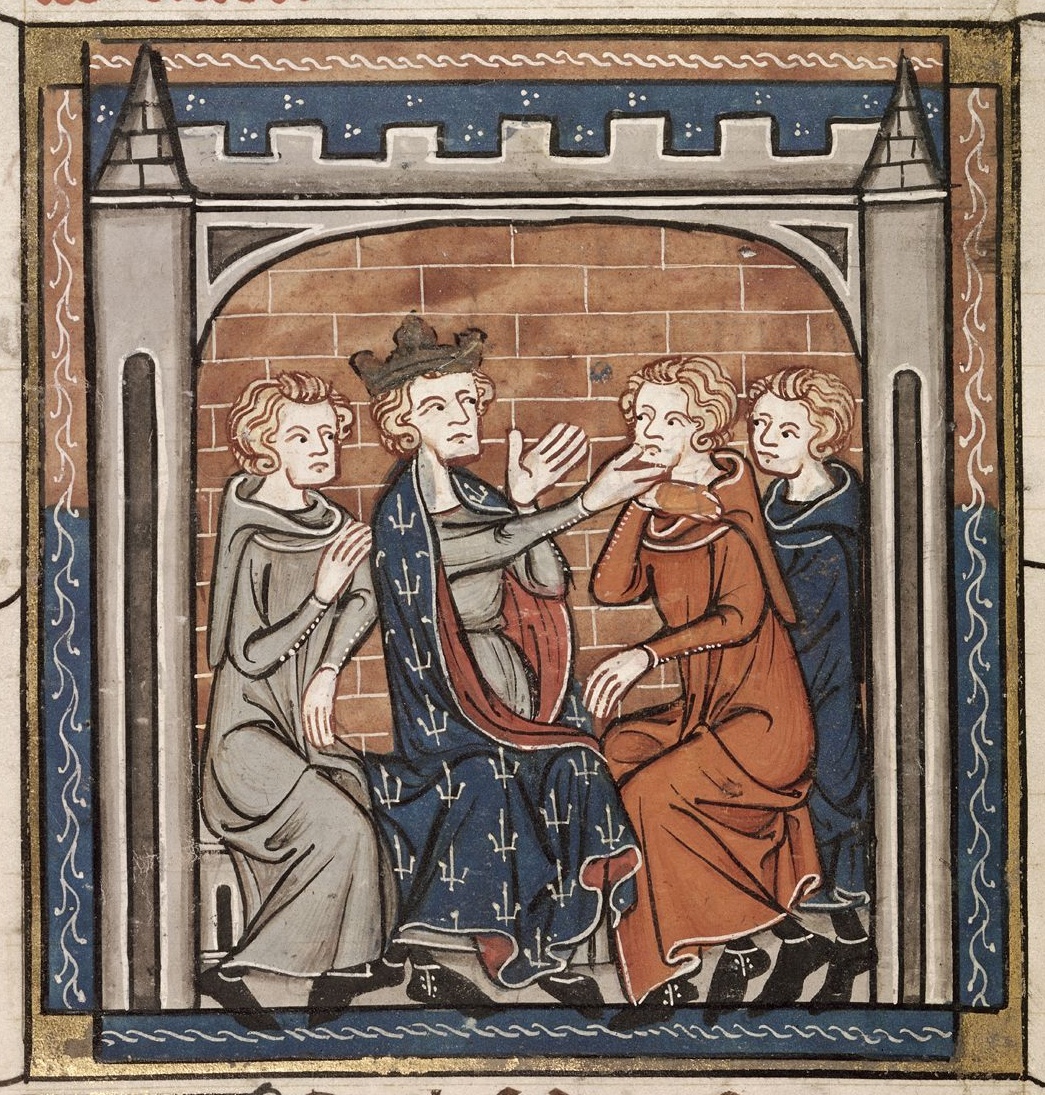Should government regulate the food industry? How do these regulations impact our individual food choices? These essential questions help students connect their individual experiences and opinions of school lunches to issues behind government regulation today and in past civilizations.
Food has always been connected to politics. Rulers and leaders from ancient, medieval, and early modern cultures knew the importance of protecting the food supply. To ensure the stability of society and prevent dangerous food riots, most historical governments provided for a least a minimum amount of food to the needy. They also passed laws to ensure the quality of key foods such as bread.
Medieval government regulation of food
In the Middle Ages, maintaining a regular and sufficient food supply, particularly grains and bread, was one of the roles of government. Bread, made of wheat, barley, rye, or oats, was a staple food for medieval Europeans. Bread was purchased from a local baker because peasant and poor urban households had only a hearth and open fire for cooking but no oven for baking. Only wealthy households could afford the expense of baking ovens and the fuel to heat them.

Food riots during shortages or famines were a threat to public order, especially in medieval cities. Urban governments frequently implemented price controls and regulations on the import and export of food, especially grains used for making bread. Cities such as Venice, almost completely dependent on grain imports, had elaborate city bureaucracies that imported, warehoused, priced, and distributed grain as well as overseeing the city’s bakers. In France and England, which generally produced enough food to feed the populace, private merchants carried out these functions. But government still enacted laws to prevent price speculation and hoarding during times of shortage so that all could usually afford the basic food – bread. (Dursteler, “Food and Politics” in A Cultural History of Food in the Renaissance)
The businesses of the miller who ground grain into flour and the baker were regulated to ensure the quality of the products. Both were taxed by the lord or town government. Medieval laws regulated the quality and price that could be charged. The assize (laws) governing the quality and price of bread in medieval England were the most widely enforced statues. These laws specified prices for loaves made of different grains, but the weight of the loaf could vary depending upon the current price of grain.
From the 19th century era of industrialization to the 21st century, local, state, and federal government regulation of food has grown to include almost every aspect of our food supply. From the farm, to the factory where food is processed, to the packaging and labeling that enter our homes, state and federal government regulations exist. Modern governments also provide a wide array of programs to feed citizens – from children to senior citizens.
School lunches = food regulation
Ask students their opinions of school lunches – the responses are sure to be loud, numerous, and varied. Next, ask them to consider who and how the menu decisions are made. Who determines the cost of the school lunch? Who decides what to buy and how to cook it? Where do the foods come from – local farmers and grocery stories or federally approved suppliers? Who benefits from school lunch programs? For answers to these questions, start with the United States Department of Agriculture website.
For most public school lunches, more specific answers can be found in the current regulations of the National School Lunch Program and the School Breakfast Program. Students will begin to discover that government regulation is a complex balancing act between serving the interests of individuals, communities, and the food industry. Remind students that children are not the only ones to benefit – many in the food industry also profit. School lunch programs have multiple goals in addition to feed hungry kids. Serving and promoting nutritious foods improves the health of the young population as a whole and reduces long-term health care costs.

Feeding hungry school children was begun by private community organizations in several American cities such as Philadelphia, Boston, and Milwalkee in the 1800s. By the early 1900s, local and state government began to support school lunch programs through public school boards of education. Federal funding for school lunches began during the Depression years of the 1930s, but declined during World War II. The National School Lunch Act that provided free and low cost meals to needy students became law in 1946.
And as with any legislative programs, changes in government leadership create changes in policy. Government funded school meals are not an exception. The requirements of the Obama-era Healthy Hunger-Free Kids Act of 2010 are currently being modified by the Trump administration. Policy constantly evolves to reflect the nutritional needs of students, the interests of the food industry, political views on the use of government funds to feed the needy, public health initiatives, and the overall political policies and interests of presidential administrations.
How do government regulations impact our individual food choices?

Government regulation of the food supply directly impacts our daily food choices. The creation and implementation of any government legislation is never simple and hardly every purely right or wrong. Encourage your students to consider the similarities and differences of historical and modern food safety and supply legislation. Ask them to weigh the pros and cons from many different angles and not just rely upon their own personal tastes and opinions.
For example, should government create food legislation that protects overall public health, even though many students may want to continue to drink sugar-sweetened beverages? How does government balance the often competing interests of individuals, public health, and the food industry?
To learn more . . .
Follow the links the text above to learn more about medieval and modern food legislation.
To learn more about the diet of a medieval peasant, historical issues related to food regulation, and using essential question to teach daily life themes in the classroom, see Investigating Family, Food, and Housing Themes in Social Studies.




This would be an engaging discussion that you could have with your students. You can ask the students to compare their school lunch to other food safety and supply legislation in the past. They have to look at multiple points of view for this question, but it is engaging because their opinions about their school lunch is implemented into the discussion.
Engaging the students in a lesson is crucial, this topic would really get students’ attention. I also like how it mentions medieval food regulations. Many kids may not realize that governments regulated food that long ago, so it could lead to a good discussion about past regulations on food compared to now. One could see compare and contrast how food regulations from the past to know are similar and different, and what drove both governments to do this.
In my fifth grade classroom, school lunch is a hot topic! Daily the students complain about how lunch is terrible and they wish they could have better food. The photos above are based on government regulation of food. I would use these primary source images to teach a lesson of the history of government regulation. We could research the regulation of food in schools in past years. These photos would be a great start for research project connecting the past to the present.